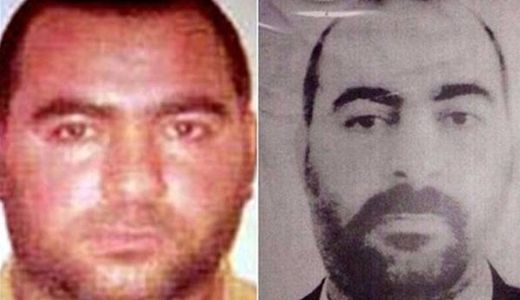There are only two authenticated photos of him, and unlike al-Qaeda leaders such as Osama Bin Laden and Ayman al-Zawahiri, he does not appear in video messages.
Even his own fighters reportedly do not speak about seeing him face to face.
The ISIL chief also appears to wear a mask to address his commanders, earning the nickname “the invisible sheikh”.
But Baghdadi – a nom de guerre, rather than his real name – has good reason to maintain a veil of mystery.
One of his predecessors, Abu Musab Al-Zarqawi who headed the most violent terrorist group in Iraq until his death, was a high-profile showman whose secret location was eventually tracked down. He was killed in a US bombing raid in 2006.
The leader of al-Qaeda’s current incarnation in Iraq may be a shadowy figure, but his organization ISIL is pulling in thousands of new recruits and has become one of the most cohesive militias in the Middle East, reports say.
Baghdadi is believed to have been born in Samarra, north of Baghdad, in 1971.
Reports suggest he was a cleric in a mosque in the city around the time of the US-led invasion in 2003.
Some believe he was already a militant during the rule of Saddam Hussein. Others suggest he was radicalized during the four years he was held at Camp Bucca, a US facility in southern Iraq where many al-Qaeda commanders were detained.
He emerged as the leader of al-Qaeda in Iraq, one of the groups that later became ISIL, in 2010, and rose to prominence during the attempted merger with another terrorist group, al-Nusra Front in Syria.
He has not sworn allegiance to the leader of the al-Qaeda network, Zawahiri, who has urged ISIL to focus on Iraq and leave Syria to al-Nusra.
Baghdadi and his fighters have openly defied the al-Qaeda chief, leading some commentators to believe he now holds higher prestige among many Islamist militants.
“The true heir to Osama bin Laden may be ISIL leader Abu Bakr al-Baghdadi,” David Ignatius wrote in The Washington Post.
Zawahiri still has a lot of power by virtue of his franchises in Pakistan and the Arabian Peninsula and North Africa, reports claim.
But Baghdadi has a reputation as a highly organized and ruthless battlefield tactician, which analysts say makes his organization more attractive to young terrorists than that of Zawahiri, an extremist theologian.
In October 2011, the US officially designated Baghdadi as “terrorist” and offered a $10 million reward for information leading to his capture or death.
It notes Baghdadi’s aliases, including Abu Duaa and Dr Ibrahim Awwad Ibrahim Ali al-Badri al-Samarrai.
As well as the uncertainty surrounding his true identity, his whereabouts are also unclear with reports he was in Raqqa in Syria.
So there remain more questions than answers about the leader of one of the world’s most dangerous terrorist groups.
